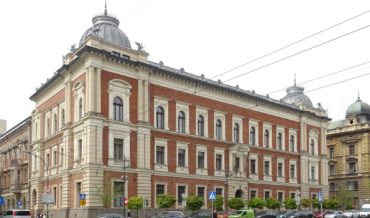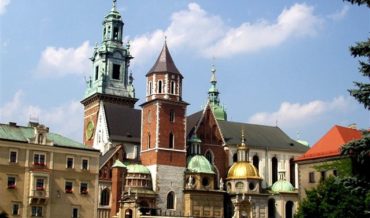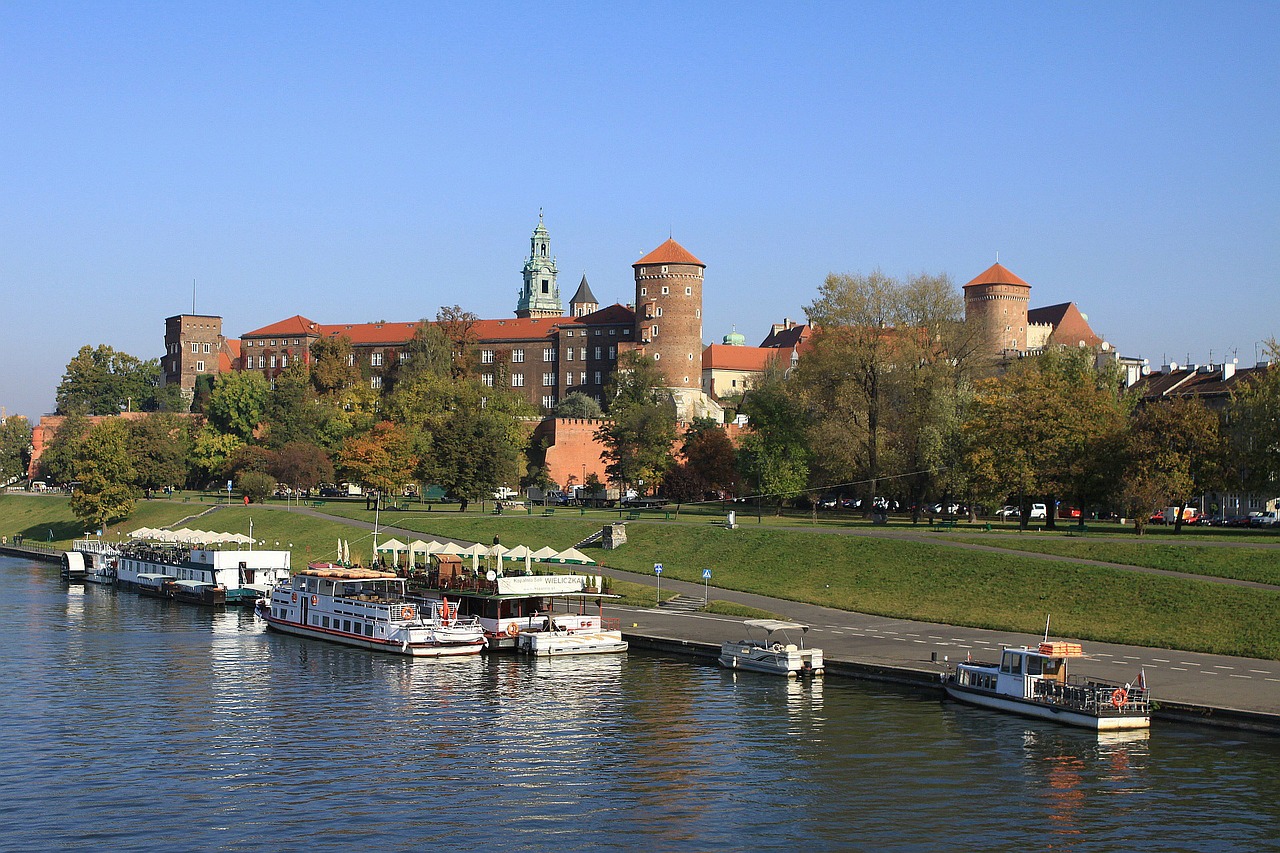Contents
- 1 Key Facts
- 2 Early Life and Technical Foundation
- 3 International Travels and Artistic Development
- 4 Revolutionary Leadership at Krakow's Academy
- 5 Patriotic Service and Wartime Experience
- 6 Post-War Cultural Leadership in Toruń
- 7 Artistic Style and Technical Innovation
- 8 Museum Collections and Artistic Legacy
- 9 Final Years in Bystra
- 10 Sources and References
Key Facts
• Born: 1853 in Tuligłowy near Mościska, died: 1929 in Bystra
• Education: Technical studies in Zurich and Munich, painting at Munich Academy
• Notable position: Director of the School of Fine Arts in Krakow (later Academy of Fine Arts)
• Imperial connection: Court painter to Emperor Wilhelm II
• Military service: Served in Polish Legions during World War I
• Artistic focus: Impressionistic landscapes, hunting scenes, portraits, and genre paintings
• Famous work: "Snow" painting series
• Legacy: Works displayed in National Museum in Krakow and Wawel Castle collections
Early Life and Technical Foundation
Julian Fałat, one of Poland's most distinguished landscape painters and art educators, was born in 1853 in Tuligłowy near Mościska (in present-day Ukraine), a region whose rural landscapes would profoundly influence his artistic vision. His unconventional educational path began with polytechnic studies in Zurich and Munich, where he gained engineering knowledge that would later distinguish his approach to artistic composition and perspective.
During his technical studies in Switzerland, he worked as a draftsman on railway construction projects, an experience that developed his exceptional attention to detail and precision in draftsmanship. This technical background provided him with a unique foundation rarely found among artists of his era—a methodical understanding of structure, perspective, and spatial relationships that became evident in his meticulous landscape compositions and architectural elements.
Recognizing his true artistic calling, Fałat transitioned to fine arts and studied painting at the prestigious Munich Academy. The Munich school's emphasis on plein air painting and naturalistic observation perfectly complemented his technical precision, allowing him to develop a distinctive style that combined academic rigor with impressionistic sensitivity to light and atmosphere.
International Travels and Artistic Development
Fałat distinguished himself as one of the most widely traveled Polish artists of his generation. His extensive journeys throughout Europe exposed him to diverse artistic movements and techniques, while his remarkable journey around the world represented an extraordinary undertaking for a 19th-century artist. This global exposure was particularly rare for Eastern European artists of the period and significantly broadened his artistic vocabulary beyond conventional European landscape traditions.
These travels were not merely touristic but served as intensive periods of artistic study. He observed how different cultures interpreted landscape, light, and seasonal changes, knowledge that he later synthesized into his uniquely Polish artistic vision. His international perspective allowed him to elevate Polish landscape painting from regional folk art to sophisticated artistic expression that could compete on the European stage.
His growing international reputation culminated in his appointment as court painter to Emperor Wilhelm II. This prestigious position not only provided financial security but also elevated Polish art within European court circles. Remarkably, Fałat maintained his distinctly Polish artistic identity even while serving the German emperor, creating works that celebrated Polish landscapes and cultural themes.
Revolutionary Leadership at Krakow's Academy
Fałat's most transformative contribution to Polish culture occurred during his tenure as Director of the Academy of Fine Arts in Krakow (now the Jan Matejko Academy of Fine Arts). His progressive reforms fundamentally modernized the institution, transforming it from a traditional academic school into one of Central Europe's most innovative art academies.
Educational Modernization and Faculty Excellence
Fałat's educational philosophy emphasized direct observation, plein air painting, and exposure to contemporary artistic movements. He restructured the curriculum to move beyond rigid academic traditionalism, encouraging students to experiment with Impressionism and emerging modernist techniques while maintaining strong technical foundations.
His most significant achievement was recruiting exceptional artists as faculty members, including:
- Leon Wyczółkowski – master of Polish historical painting and folk art documentation
- Józef Pankiewicz – pioneer who introduced French Impressionist and Post-Impressionist techniques to Polish art
- Teodor Axentowicz – renowned portraitist and decorative artist
These appointments created a faculty of international caliber that attracted students from across the Austro-Hungarian Empire and established Krakow as a major artistic center. Fałat's vision proved prescient, as many of his students became leading figures in 20th-century Polish art. His influence on the artistic heritage of the region paralleled the legacy preserved at the Jan Matejko House, which celebrates another master of Polish art.
Patriotic Service and Wartime Experience
During World War I, despite being in his sixties and having an established international career, Fałat demonstrated profound patriotism by joining the Polish Legions under Józef Piłsudski. His military service reflected his belief that cultural leaders had special responsibilities during national crises.
This firsthand experience of Poland's struggle for independence imbued his later works with heightened emotional depth and national consciousness. His wartime sketches and paintings documented the Polish independence movement from an artist's perspective, creating historical documents of significant cultural value.
Post-War Cultural Leadership in Toruń
After the war, Fałat relocated to Toruń, where he became a cultural entrepreneur and community organizer. His initiatives demonstrated his understanding that artistic development required supportive community infrastructure:
- Founding the Confraternity of Artists – created professional networks and mutual support systems for regional artists
- Establishing the Music Society – promoted musical education and cultural programming
- Creating the Society for the Protection of Children – demonstrated his commitment to social welfare and community development
These activities exemplified his philosophy that artists should serve as cultural catalysts within their communities, not merely as individual creators working in isolation.
Artistic Style and Technical Innovation
Fałat specialized in landscapes, hunting scenes, portraits, and genre paintings, developing a distinctive approach that merged French Impressionist techniques with Polish subject matter and sensibility. His technical precision, derived from his engineering background, combined with his sensitivity to atmospheric effects to create a unique artistic voice. His work represents a significant contribution to 19th-century Polish art that can be appreciated alongside other masters of the period.
Mastery of Winter Landscapes
His most celebrated work, "Snow", represents a series of winter landscape paintings that demonstrate his exceptional ability to capture the subtle color variations within seemingly monochromatic snowy scenes. These works reveal his mastery of light effects, showing how winter light creates complex interactions between blue shadows, warm reflected light, and the crystalline texture of snow surfaces.
Fałat's snow paintings challenged the conventional artistic wisdom that winter scenes were inherently colorless. Through careful observation and sophisticated color theory, he revealed the rich chromatic possibilities within Polish winter landscapes, creating works that were both scientifically accurate and emotionally evocative. His winter landscapes of the Malopolska region particularly captured the essence of the southern Polish countryside.
His hunting scenes similarly demonstrated his ability to capture movement, atmosphere, and the relationship between humans and the natural environment. These works often depicted the traditional Polish countryside with a combination of nostalgia and precise observation that appealed to both national sentiment and international artistic standards.
Museum Collections and Artistic Legacy
Fałat's works are preserved in Poland's most prestigious cultural institutions:
- National Museum in Krakow – houses the most comprehensive collection of his paintings, drawings, and sketches
- Wawel Royal Castle – displays works that reflect his significance in Polish cultural history
- National Museum in Warsaw – maintains important examples of his mature period
His influence extended beyond his own artistic production through the generations of students he taught and the institutional reforms he implemented. Many prominent 20th-century Polish artists traced their artistic lineage to Fałat's teaching and educational philosophy. The broader historical context of his era can be explored through the Historical Museum of Krakow, which documents the period when he transformed artistic education in the city.
Final Years in Bystra
Fałat spent his retirement years in Bystra, a mountain village in the Beskid range, where he continued painting until his death in 1929. Surrounded by the alpine landscapes that had long inspired his work, he created some of his most introspective and technically refined paintings during this final period. The mountain culture and landscapes that influenced his later works were part of the broader highland tradition that can be experienced in places like Zakopane and the Tatra Mountains.
His choice to spend his final years in the mountains, rather than in major cultural centers, reflected his lifelong commitment to finding artistic inspiration in the Polish landscape itself. This decision reinforced his identity as fundamentally a painter of Polish nature and rural life.
Julian Fałat's career embodied the ideal of the artist as both creative innovator and cultural leader. His technical precision, international perspective, and deep commitment to Polish artistic development established him as a pivotal figure in the transition from 19th-century academic art to modern Polish artistic expression.
Sources and References
- National Museum in Krakow: https://mnk.pl/
- Jan Matejko Academy of Fine Arts in Krakow: https://www.asp.krakow.pl/
- Wawel Royal Castle Collections: https://www.wawel.krakow.pl/
- National Museum in Warsaw: https://www.mnw.art.pl/



